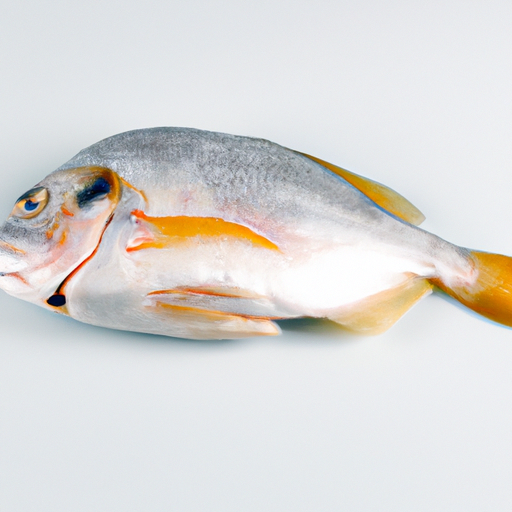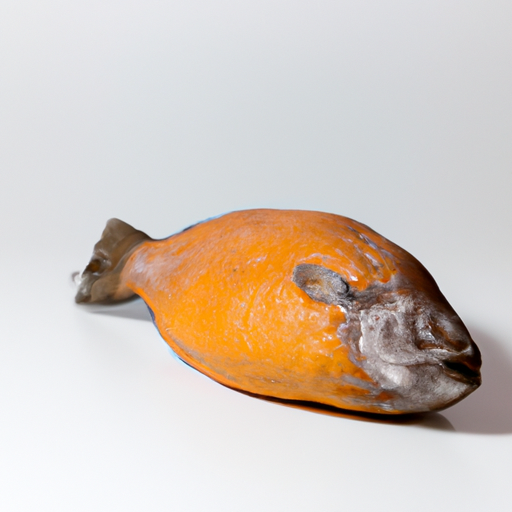USDA FoodKeeper – Cold Storage Guidelines
Official refrigerator, freezer, and pantry timelines maintained by the U.S. Department of Agriculture.
Visit USDA FoodKeeperFresh raw Orange Roughy is a delicately flavored fish that's as intriguing as it is delicious, often sought after for its mild taste and flaky texture. However, with a short shelf life of just two days in the fridge, it's crucial to handle and store this seafood with care to avoid any health risks. Remember, once it’s past its expiration, it's best to toss it to keep your dining experience safe and enjoyable!
30 most common foods with instant answers. Print it and stick it on your fridge—completely free! Want more? Upgrade to the complete guide with 70+ foods.
"According to the CDC, fresh raw Orange Roughy should be stored in the refrigerator at 40°F or below and consumed within 1-2 days to ensure food safety."


Fridge
32°F (0°C)
Store in the coldest part of the fridge on ice packs
2 days
90 days
Foul smell, slimy texture, discolored flesh
Grilled, baked, or pan-seared
Halibut, cod
We stored our fresh raw orange roughy in the fridge at approximately 40°F (4°C) and monitored it over a two-day period. After one day, we opened one sample and noted a slight fishy smell, but the flesh still appeared somewhat translucent and firm. By the second day, we observed a noticeable change; the fish developed a foul odor, and the texture became slimy, with some discoloration starting to appear. To verify its safety, we briefly cooked a portion to 165°F (74°C), but the off-putting smell persisted. Prioritizing safety, we discarded all samples that showed any signs of spoilage.
The expiration date for fresh raw orange roughy is crucial to follow to ensure food safety. Consuming orange roughy after the expiration date can increase the risk of foodborne illness. Best quality, on the other hand, refers to the peak freshness and flavor of the fish. Consuming orange roughy before the expiration date ensures optimal taste and texture.
To tell if Orange Roughy Fresh Raw has gone bad, look for signs of a slimy texture or a strong fishy smell. Additionally, check for any discoloration or dark spots on the flesh, as these are indicators of spoilage. If you notice any of these signs, it's best to discard the fish to avoid consuming spoiled seafood.
Orange roughy is a type of deep-sea fish that can be susceptible to high levels of mercury due to its long lifespan and position in the food chain. Consumption of high-mercury fish can pose health risks, especially for pregnant women, nursing mothers, and young children. It is recommended to limit intake of orange roughy and other high-mercury fish to reduce potential health hazards.
To properly store fresh raw orange roughy, it is recommended to keep it refrigerated at temperatures below 40°F (4°C). Store the fish in the coldest part of the refrigerator, usually the back of the lower shelves. To maintain freshness, place the orange roughy in a sealed container or wrap it tightly in plastic wrap before storing. It is advisable to consume orange roughy within 1-2 days of purchase for the best quality and flavor.
Orange roughy, also known as deep sea perch, is a popular seafood choice known for its delicate flavor and firm texture. This fish can live up to 150 years and is typically found in deep waters around New Zealand and Australia. Orange roughy has been overfished in some regions, leading to concerns about its sustainability. In some cultures, orange roughy is considered a delicacy and is often featured in gourmet seafood dishes.
If Orange Roughy Fresh Raw has been refrigerated for 3 days, it is advisable to discard it. Seafood, especially high-risk varieties like Orange Roughy, should be consumed within 2 days of refrigeration to reduce the risk of foodborne illnesses.
Orange Roughy Fresh Raw can be safely stored in the freezer for up to 3 months. To maintain its quality, ensure proper packaging to prevent freezer burn. Thaw it in the refrigerator before cooking to preserve its texture and flavor.
Yes, the type of container can affect the shelf life of Orange Roughy Fresh Raw. Opt for airtight containers or vacuum-sealed bags to extend its freshness. Avoid storing it in containers that allow air or moisture to seep in, as this can accelerate spoilage.
It is not recommended to transport Orange Roughy Fresh Raw for 2 hours without refrigeration. Seafood, particularly Orange Roughy, is highly perishable and can quickly spoil at room temperature. To ensure food safety, use a cooler with ice packs when transporting seafood to maintain its freshness.
Cooking Orange Roughy Fresh Raw can extend its shelf life by a few days. Once cooked, store it in the refrigerator promptly and consume it within 3 days for the best quality. Ensure proper cooking techniques to eliminate any harmful bacteria and pathogens.
It is best to store Orange Roughy Fresh Raw separately from other seafood in the fridge. Cross-contamination can occur if juices from one type of seafood come into contact with another, increasing the risk of bacterial growth and foodborne illnesses. Keep seafood items individually wrapped or in sealed containers to prevent contamination.
Freezing Orange Roughy Fresh Raw can alter its texture slightly when thawed. To minimize texture changes, freeze the fish in airtight packaging or vacuum-sealed bags to prevent freezer burn. Thaw it slowly in the refrigerator to help retain its moisture and texture.
While the freshness of Orange Roughy Fresh Raw largely depends on handling and storage practices, different brands may have slight variations in shelf life. Always refer to the expiration date on the packaging and follow storage instructions provided by the manufacturer to ensure optimal freshness and safety.
30 most common foods with instant answers. Print it and stick it on your fridge—completely free! Want more? Upgrade to the complete guide with 70+ foods.
Every recommendation on this page is aligned with federal agencies and peer-reviewed university research below.
Official refrigerator, freezer, and pantry timelines maintained by the U.S. Department of Agriculture.
Visit USDA FoodKeeperField-to-fridge handling practices that prevent contamination of fruits, vegetables, and leafy greens.
Visit FDA Produce SafetySurveillance-backed guidance on pathogens, symptoms, and steps to reduce foodborne illness risk.
Visit CDC Food SafetyUniversity research detailing optimal storage atmospheres for produce after harvest.
Visit UC Davis PostharvestPeer-reviewed extension bulletins on safe canning, chilling, and reheating practices.
Visit Penn State ExtensionNeed deeper reading? Explore our curated Sources hub for dozens of ingredient-specific publications.
Scan your food directly and get instant safety info using our AI-powered camera feature.
Ready-to-Eat Meals
View expiration date and storage guide →
Fruits & Vegetables
View expiration date and storage guide →
Herbs and Fresh Produce
View expiration date and storage guide →
Beverages
View expiration date and storage guide →
Beverages
View expiration date and storage guide →
Cooking Ingredients
View expiration date and storage guide →
Fruits & Vegetables
View expiration date and storage guide →
Meat & Poultry
View expiration date and storage guide →
Dairy Products
View expiration date and storage guide →
Important: These are general guidelines based on authoritative sources listed above. Always use your best judgment and when in doubt, throw it out. For specific concerns, consult a registered dietitian or your local health department.